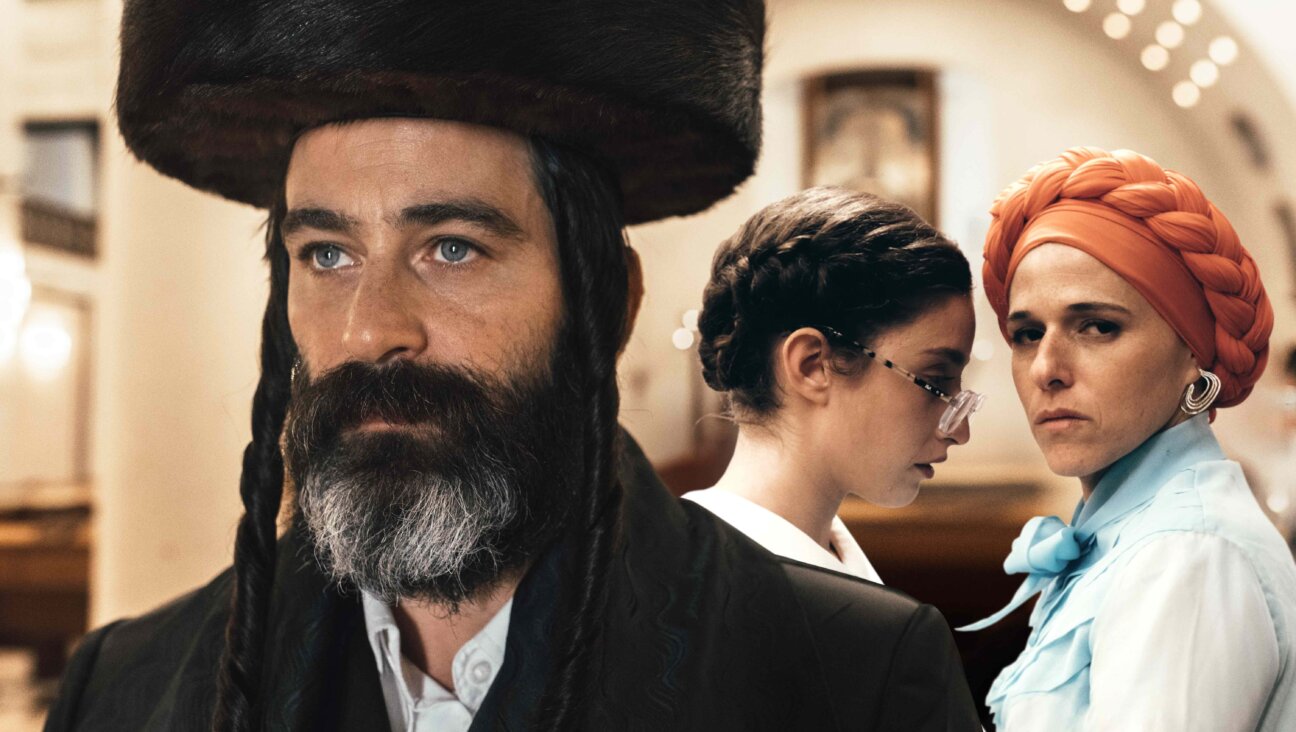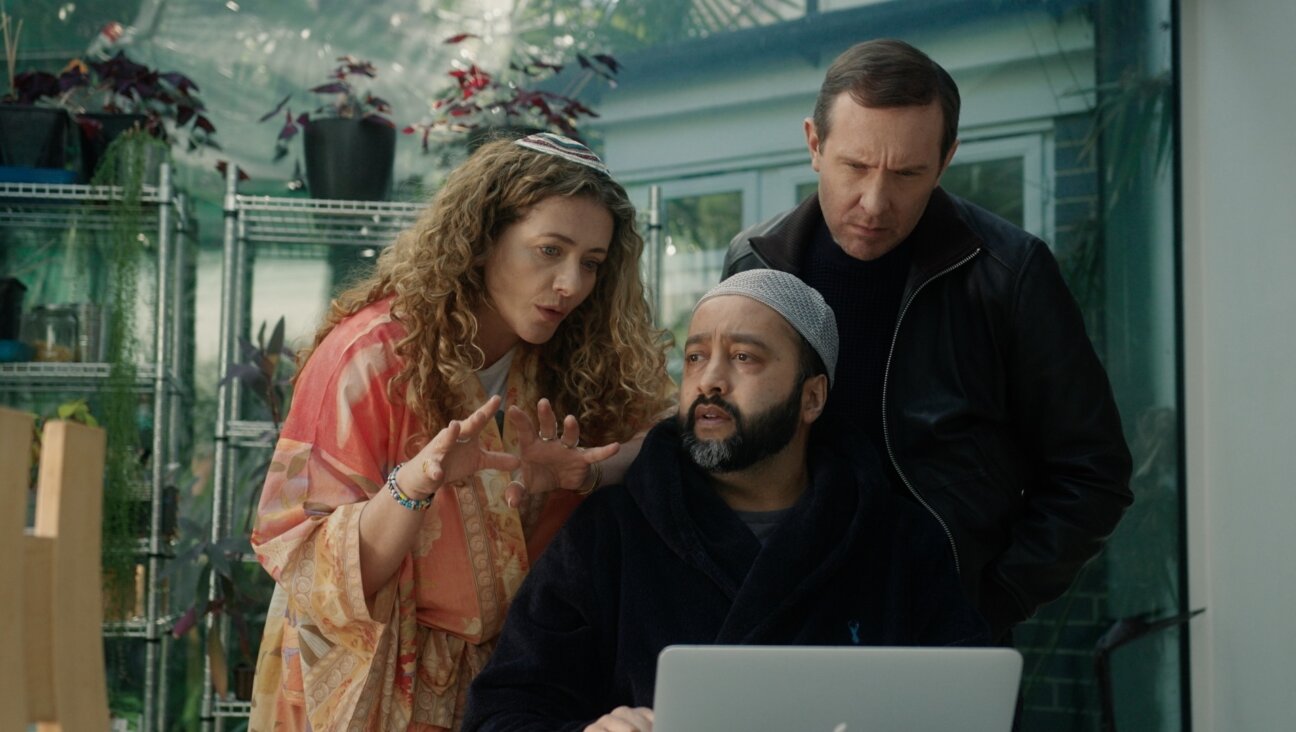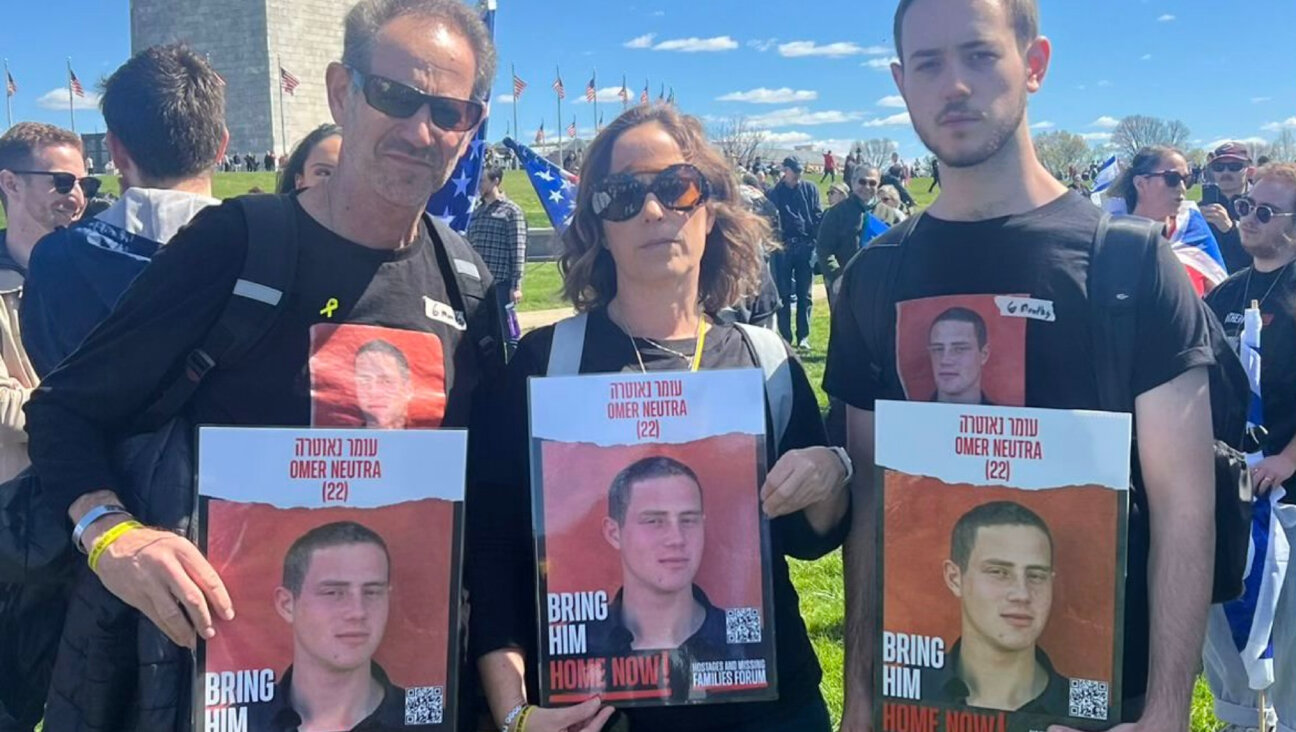LGBT Issues Provide Challenges for Jewish Films

Image by Courtesy of Washington Jewish Film Festival
When the Washington Jewish Film Festival opens, on February 24, one of its most interesting offerings will be a series called “Rated LGBTQ.”
It’s a curious title, given that movie ratings are used to help delineate which audiences are appropriate for a given film. On the one hand, it’s an invitation: Individuals who identify on the spectrum of lesbian, gay, bisexual, transgender, queer, intersex and asexual (LGBTQIA) are being explicitly welcomed to the festival, both as artists and as audience members. On the other hand, it may be read as a warning: If you don’t want to see films about these topics, the label makes them easier to avoid.
This equivocating approach — a desire to open the doors to new perspectives, twinned with some tentativeness over what material Jewish audiences are ready for — is reflected, in curious ways, in the films included as parts of the “Rated LGBTQ” program. The program comprises a mix of narrative features and documentaries. The narrative features take on less challenging stories, while many of the documentaries make hesitancy in Jewish communities about approaching LGBTQIA issues one of their primary subjects.
Taken as a group, the documentaries are uneven, making for a less reliably engaging artistic experience than that provided by their fictional fellows. The stories they tell, however, and the characters they present are overwhelmingly more compelling than those of the narrative features.
Of the narrative features, only one, “Sunday, Bloody Sunday” — also the only throwback film of the lot, having premiered in 1971 — has a man identifying as LGBTQIA (in this case bisexual) as one of its leading characters. Most of the rest focus on women.
The narratives included in the festival share an uncertainty about how to portray LGBTQIA individuals as members of Jewish communities. The clumsiest, on this measure, is Christina Zeidler and John Mitchell’s “Portrait of a Serial Monogamist.” It tells the story of 40-something Elsie, who has left a string of broken hearts around Toronto. Elsie’s Jewish community manifests primarily through the figure of her mother, whose entire character seems to be shaped around deploying the excuse of “I’m just a nice Jewish girl from Montreal” whenever confronted with an idea she doesn’t quite understand. (There are, in an unfortunate choice made by the filmmakers, a lot of these ideas.) Other characters bringing the Jew factor include one of Elsie’s former lovers, who is now a close friend; a Jewish woman who throws — sigh — a dramatic funeral for her cat, and Elsie’s brother, who utters the regrettable line, “At this point, multiculturalism is as passé as the cultural mosaic,” carefully raised eyebrows included. The point of this exaggerated stereotyping of Elsie’s Jewish community is unclear, but it seems that part of the trouble comes from some difficulty imagining a Jewish community in which Elsie’s sexuality, while not fully understood, doesn’t necessitate her exclusion. Imagining such a community is a challenging task, in the face of which resorting to caricatures makes sense; if the characters can’t be accused of being realistic, neither can they be accused of misrepresenting a community treading into relatively new and sensitive territory.
Bringing somewhat greater nuance is Michal Vinik’s “Blush.” Set in Israel, it focuses on Naama Barash, who, just shy of 18, falls for a new girl at her school. At the same time, Naama’s sister, Liora, is discovered to have an Arab boyfriend, a fact she’s been hiding by referring to him to her friends by a Hebrew name. The sisters, making their way through their variously unorthodox loves, are united only halfheartedly by their comparable circumstances. Their parents try to brush off Liora’s love as a phase, which prompts Naama to come to her sister’s defense, but Liora delivers the same message to Naama when she hesitantly confesses that she thinks she might be a lesbian. It’s a situation with great potential to reflect on why certain kinds of love are condemned by certain communities, but the film, which dedicates most of its time to Naama’s drink-and-drug-fueled lifestyle, only skitters along the surface of that subject.
Adam Kalderon’s “Marzipan Flowers,” the most artistically innovative of the narrative features, supplies greater depth. It follows Hadas, a heterosexual widow who leaves her kibbutz for Tel Aviv and moves in with Petel, a transgender woman. The two become fast friends, and Hadas becomes the central focus of a small community of Jews who have found themselves to be, somehow, misfits, whether in their families, in their careers or in their hometowns. The film is a gentle, moving representation of the formation of a new community, hopeful in its imagination of the ability for adaptation. It is also very aware of the adversity present in older, more entrenched communities that compelled the new group’s members to form it in the first place.
Among the documentaries, “The Good Son” and “Third Person” struggle artistically but are arresting in their narratives. “The Good Son” begins with home videos filmed by Or, a 22-year-old Israeli man preparing, in secret, for a sex change. He interests a filmmaker, Shirly Berkovitz, in his story, and she follows him to Thailand. There he undergoes extensive operations and a prolonged recovery, all the while telling his parents he is studying at Oxford. Then Or, now a she, returns to Israel to introduce herself to her parents, whose reaction she anticipates to be unforgiving. In some ways she’s right, and in some ways she’s not. The film tracks her developing relationship with her parents and her efforts to create, as a woman, the life she’s longed for.
“Third Person,” directed by Sharon Luzon, focuses on two intersex Jews learning how to live as members of what the film refers to as a “third sex,” a group of people born with both female and male genital organs. Suzan, the film’s protagonist, discovers that she is intersex when, in her late 30s, she finds that the medical records she asked for reveal that she had male genitalia at birth. Her mother, unaware of Suzan’s condition and speaking little Hebrew, consented to an operation that she was told, vaguely, was necessary to make her little girl a girl. Building a new community for intersex individuals in Israel, Suzan meets Ofer, whose parents decided against surgery and who has faced substantial complications in living a devout Jewish life while being intersex. (In one especially moving moment, he recounts how he had his breasts removed in order to be able to recite the blessings of the Kohanim as a man.)
The fact that the people and relationships “The Good Son” and “Third Person” follow are unavoidably real operates in those films’ favor. The movies are able to sidestep the difficulty of both effectively and inoffensively representing a changing community that troubles some of the narrative features. Their characters, and the variety of attitudes they display — accepting, uncomprehending and otherwise — are more relatable and thought-provoking for that liberation.
Talya Zax is the Forward’s culture intern.

I hope you appreciated this article. Before you go, I’d like to ask you to please support the Forward’s award-winning journalism this Passover.
In this age of misinformation, our work is needed like never before. We report on the news that matters most to American Jews, driven by truth, not ideology.
At a time when newsrooms are closing or cutting back, the Forward has removed its paywall. That means for the first time in our 126-year history, Forward journalism is free to everyone, everywhere. With an ongoing war, rising antisemitism, and a flood of disinformation that may affect the upcoming election, we believe that free and open access to Jewish journalism is imperative.
Readers like you make it all possible. Right now, we’re in the middle of our Passover Pledge Drive and we need 500 people to step up and make a gift to sustain our trustworthy, independent journalism.
Make a gift of any size and become a Forward member today. You’ll support our mission to tell the American Jewish story fully and fairly.
— Rachel Fishman Feddersen, Publisher and CEO
Join our mission to tell the Jewish story fully and fairly.
Our Goal: 500 gifts during our Passover Pledge Drive!

























